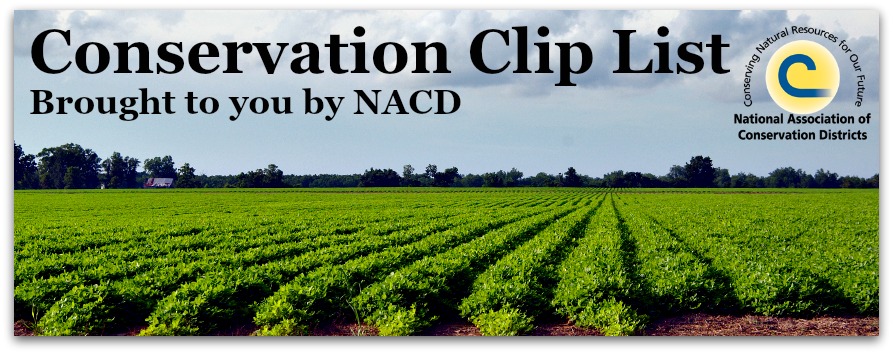
Conservation Clip List is a weekly collection of articles distributed by NACD that provides our members and partners with the latest news in what's driving conservation. If you have a relevant submission, please contact your NACD Communications Team.
USDA NASS conducts conservation assessments survey via Farm Futures
USDA’s National Agricultural Statistics Service is contacting 25,000 farmers and ranchers now through August to take part in a national survey that will more accurately measure the environmental benefits associated with implementation and installation of conservation practices on agricultural land.
2018 Farm Bill: What about CRP? Via Agri-Pulse
(Opinion) Although the presidential debates are ahead of us, the debate on increasing the Conservation Reserve Program (CRP) acreage cap has already begun. My concern is that we don't expand conservation on idle lands at the expense of environmental protection on working lands.
Branstad offers a twist on his controversial water quality plan via The Des Moines Register
Gov. Terry Branstad has put a twist on his controversial proposal to use a portion of a major school infrastructure fund to help pay for water quality improvements in Iowa.
DNA Study Reveals the One and Only Wolf Species in North America via The New York Times
The first large study of North American wolf genomes has found that there is only one species on the continent: the gray wolf. Two other purported species, the Eastern wolf and the red wolf, are mixes of gray wolf and coyote DNA, the scientists behind the study concluded. The finding, announced Wednesday, highlights the shortcomings of laws intended to protect endangered species, as such laws lag far behind scientific research into the evolution of species.
Paul Ferraro: When Conservation Efforts End Up Using More Water via Ag Web
(Opinion) The U.S. Interior and Agriculture Departments have pledged almost $50 million in new public investment to improve water efficiency in domestic agriculture… But there is one problem: the assumption that such spending automatically leads to reduced water use is not grounded in theory or evidence. In fact, improving efficiency may fail to deliver large water savings and even, paradoxically, increase use.
USDA to conduct aerial seeding across Massachusetts via MassLive
A statewide aerial seeding initiative is slated to begin next week in an effort to improve and protect farmland across the commonwealth. Beginning Aug. 10, a helicopter will take to the sky to drop winter rye grass seed on cropland.
Our Consumption Of Earth’s Natural Resources Has More Than Tripled In 40 Years via The Huffington Post
In 1970, about 22 billion tons of primary materials were extracted from the Earth. These included metals, fossil fuels like coal, and other natural resources, such as timber and cereals. In 2010, that number had ballooned to 70 billion tons. We’ll need 180 billion tons of material annually to meet demand by 2050 if the world continues to use resources at the same rate it does today, the report estimates.
Turning Iowa farmland into butterfly, bee habitat via The Des Moines Register
Over the past four years, Iowa farmers have enrolled 127,005 acres in a federal conservation reserve program designed to sustain butterflies, bees, wasps, birds and bats — with all but 15,000 acres being added in the past year, according to the Iowa Farm Service Agency.
DNR reviews farm regulations via Milwaukee Journal Sentinel
The Wisconsin Department of Natural Resources has started the regulatory ruling-making process that could make manure-spreading practices safer in areas prone to water contamination.
Allegan County group aims to help grouse at state game area via Hollandsentinel.com
The Allegan County Conservation District in Michigan is coordinating the restoration of grouse habitat across 50,000 acres of state-owned forestland.
ARS Research Leads to Better Understanding of Bee Health via USDA-ARS
Bacteria in the gut of young honey bees may provide clues about the impact parasites have on bee health.